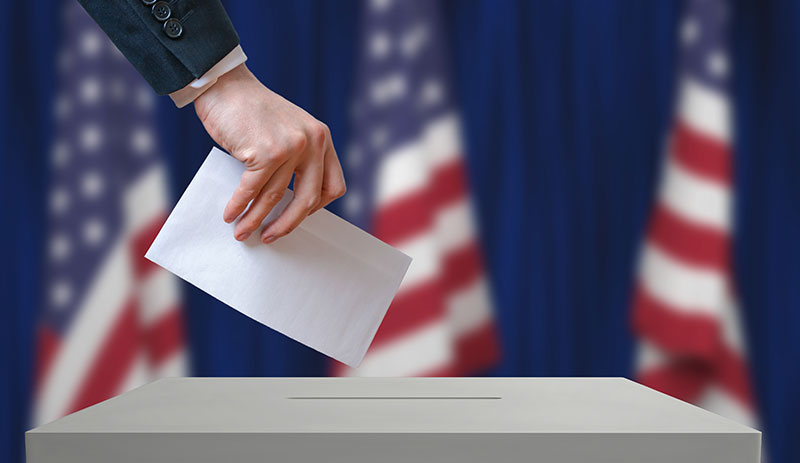by Chris Kuehl, managing director
Armada Corporate Intelligence
As far as elections are concerned, “It’s the economy, stupid” has been the refrain for a while now. It essentially asserts that, when it comes right down to it, the only thing voters really care about is the economy. That may not be as true for the election in 2020 as it has been in past years, but the topic still will command a lot of interest as the focus shifts from attracting the hard-core primary voter to influencing the vast middle of the voting population. At this point in the campaign, it is a little hard to pinpoint exactly what the field of Democrats have in mind as far as economic policy, but some themes are emerging. In fact, there appears to be a substantial difference between the two wings of the Democratic party – progressives and moderates (or traditionalists).
Thus far, little attention has been paid to the issue of economic growth or any of the currently pressing issues affecting the economy: No focus on the labor shortage that has hampered many businesses as they try to expand, no attention to the trade war or tariff issue, no mention of what to do with US trade partners, no discussion of how to address the nation’s infrastructure needs, no comment on R&D needs … and so on. It is likely that some or all of these issues will start to emerge as the election grows closer, but it has been hard to argue that the economy under Trump has been faltering. The key issue now is whether the economic weaknesses that have started to appear will merit more concern a year from now.
The four most discussed economic issues among Democrats involve health care, education, minimum wage and equal pay. A related issue is taxation, as there will have to be additional revenue to support the programs that have been suggested. There also has been some attention paid to regulation as a means by which to address other issues, and these will have an impact on business and the economy as well.
Health care
At the top of the list is health care, and the mantra from some in the Democratic field is “Medicare for all.” There are a range of suggestions that vary from a totally government-funded medical system to some hybrid between public and private, but the focus of the entire conversation is how to pay for medical care. There are essentially three players in the system – the patient, the health care provider and the entity that pays for the care. Ultimately, the patient pays, but the question is how. Currently, a complex system exists that revolves around private insurance – which each person is responsible for acquiring. Once a person reaches retirement age, the Medicare option appears, and the government pays the health care provider while the patient pays through their role as taxpayer. Most Medicare recipients also carry private insurance as a supplement. Medicaid is offered to those who have no means to acquire their own insurance. To expand Medicare/Medicaid to all means that private insurance either vanishes or is drastically curtailed, and the government pays all the bills – meaning, the taxpayer pays all the bills. The obvious economic issue is where the additional funds will come from, and there are only two options: Raise revenue with new or expanded taxes or cut funding from other programs to finance health care. Neither of these options will be popular, and it is very doubtful that either option would pass through both Houses of Congress, although some hybrid plan might have a shot.
Education
The second issue that has attracted early attention has been education. One issue is access, and the other is student loan debt. The origins of the problems are similar. Over the last couple of decades, education has become very expensive, as state legislatures have steadily reduced their financial support, and the schools have been developing bigger budgets. Tuition has skyrocketed, and now there are many people who have been priced out of higher education and millions more who are dealing with paying off the debt they incurred. The solutions offered by Democratic candidates have varied from offering free university education to everyone to forgiving all student debt. There are economic implications involved with either plan. The offer of free education would overwhelm the current education system and would demand very swift expansion, a challenge that would be hard to meet, given the limitations on qualified instruction. More salient is the issue of devaluation. Should the college degree become as ubiquitous as the high school diploma, it loses most of its influence and provides no advantage to the holder of that degree.
The issue of student debt has been affecting the economy negatively for years. Those who have taken out a significant amount of debt have been limited later, finding themselves unable to buy homes as easily or engage in other economic activity. They have been slow to start families and often find their employment options limited. Granted, the majority of those who finished their college education and chose a major with economic upside have had little problem paying on their loans, but there are thousands who have been struggling. The potential of a government offer to pay off these loans would be an expensive proposition and – once again – the issue becomes the source of the revenue. The other issue is fairness. Those who have been paying their loans or have already paid them are not getting any break at all – only those who are not meeting their obligations. It seems to be sending a rather awkward signal that one is better off refusing to honor one’s obligations while demanding that somebody else pay for it.
Minimum wage
The third major issue has been the minimum wage. The current federal minimum is $7.25 an hour and, if one assumes a 40-hour work week, that adds up to $290. If one works all 52 weeks of the year, that equals an income of around $15,000. The poverty rate for a family of four is $25,750, and the median household income is $65,372. It is obvious that $15,000 a year is insufficient for a family. If the rate was moved to $15 an hour, the annual income would be around $31,000 – but that assumes a 40-hour work week for all 52 weeks.
The questions are complex. It starts with who the minimum wage is for – is this designed for the teen just starting to gain job experience or the casual part-time worker? That was the original intent, but today there are thousands of people who are raising families with these low-paying jobs. The bigger question is how the business community will react to the higher wages. They face the reality that all of their employees will be demanding a raise. The guy that was making $15 an hour will demand more if a new and inexperienced worker now is getting $15. The business knows that its labor costs will approximately double, and that will require a response. The vast majority will reduce the size of the labor force through the addition of machines and technology, and that will mean less opportunity for the low-skilled or inexperienced worker.
Equal pay
The last of these issues is equal pay. The average pay for women still lags that of men doing the same job. It is estimated that women working full time make 80% of what men make. There are many factors in play – everything from the jobs that are being performed to longevity – but even the most optimistic estimates have women paid around 90% of what men make for the same jobs. Addressing the pay gap is hard to do legislatively, and that means more reliance on the regulatory system. It is unlikely to have a major impact on taxpayers but could add to labor costs for businesses that would need to address the gap.
The ideas that are being discussed by the Democratic candidates thus far are painted in the broadest of strokes and clearly are aimed at galvanizing the base. At this point, the contest is between the two wings of the Democratic Party, and economic issues largely have taken second place behind more emotional issues, such as racism and immigration. The one constant thus far is that these policy suggestions will cost a great deal of money, and this burden falls on a country that already has a record level of national debt and a record deficit that constantly require the raising of the debt ceiling.
Chris Kuehl is managing director of Armada Corporate Intelligence. Founded by Keith Prather and Chris Kuehl in January 2001, Armada began as a competitive intelligence firm, grounded in the discipline of gathering, analyzing and disseminating intelligence. Today, Armada executives function as trusted strategic advisers to business executives, merging fundamental roots in corporate intelligence gathering, economic forecasting and strategy development. Armada focuses on the market forces bearing down on organizations. For more information, visit www.armada-intel.com.





